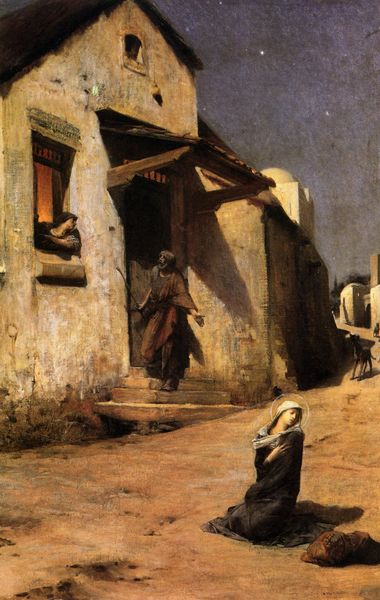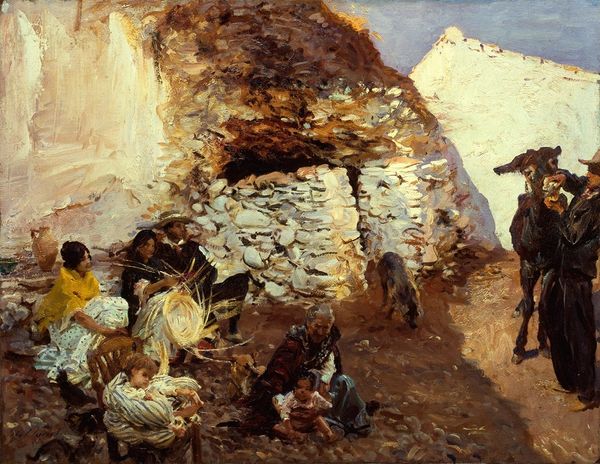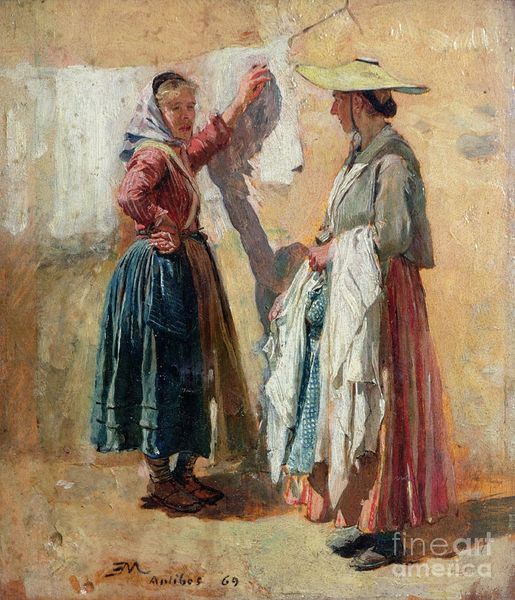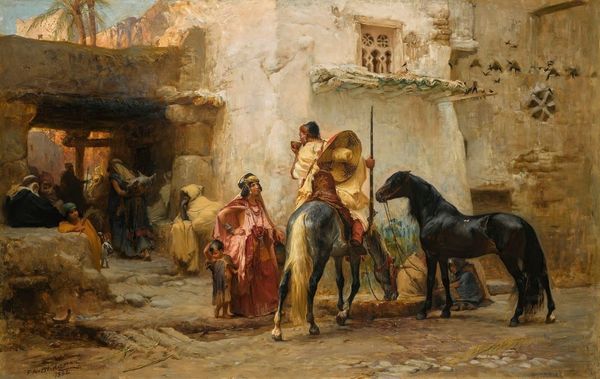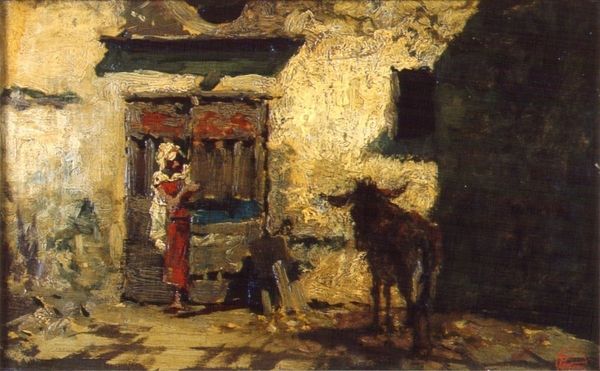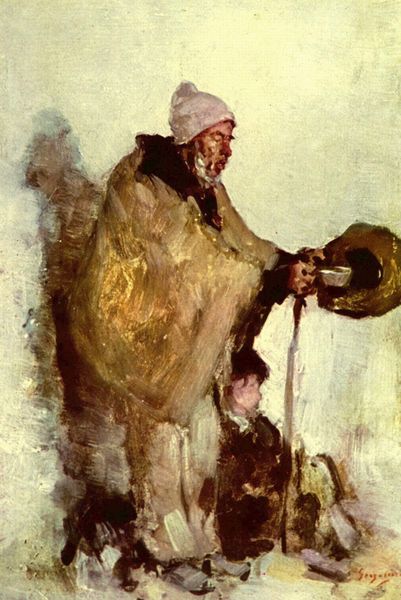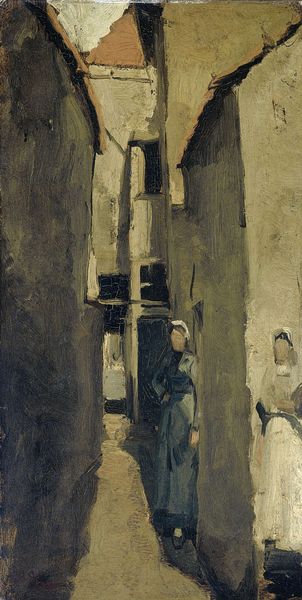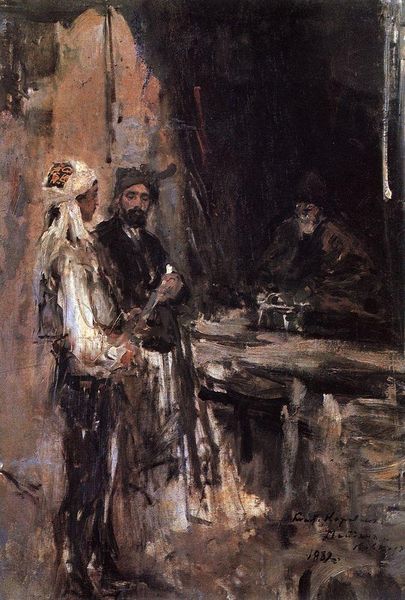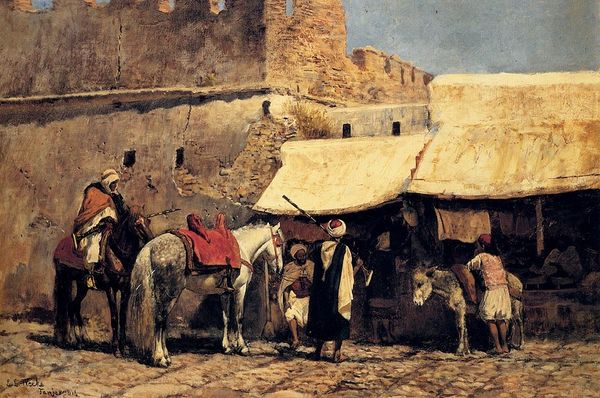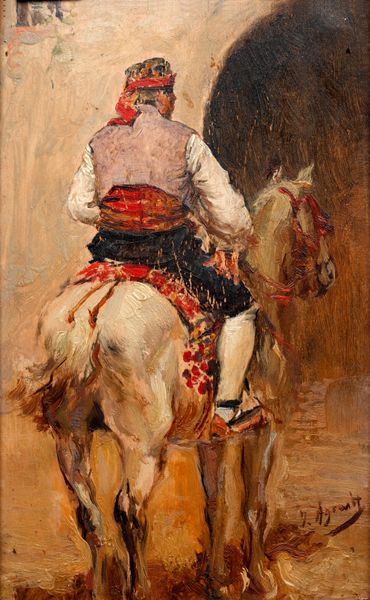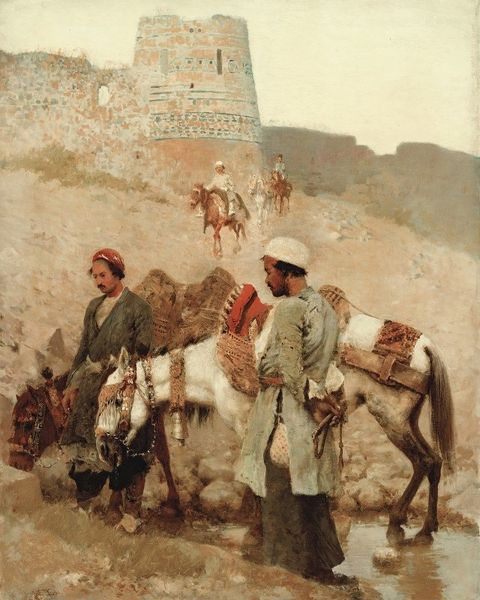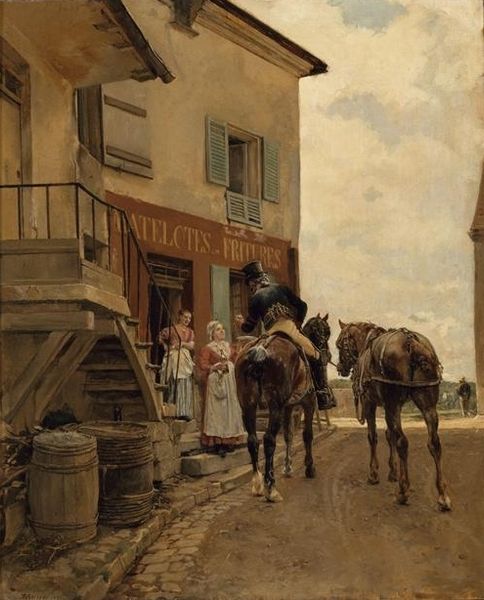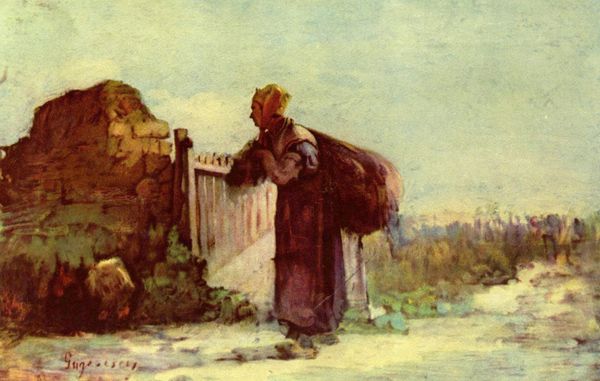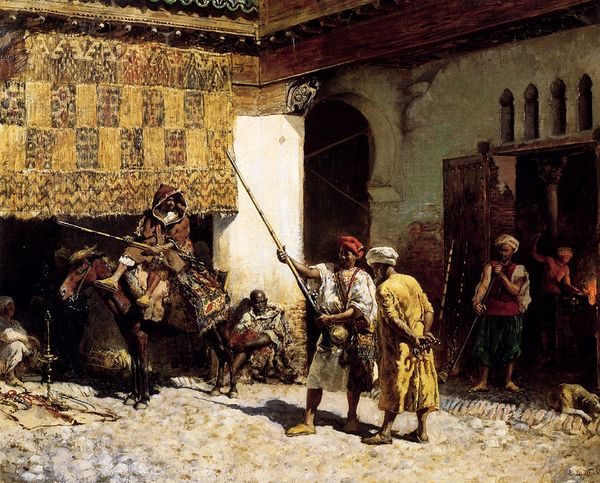
plein-air, oil-paint, impasto
#
portrait
#
impressionism
#
plein-air
#
oil-paint
#
landscape
#
oil painting
#
impasto
#
genre-painting
#
realism
Dimensions: 24.5 x 17.5 cm
Copyright: Public domain
Curator: This oil on panel painting, dating to 1890, is entitled "Nun with Donkey" by Giovanni Fattori. Fattori was an Italian artist, one of the leaders of the Macchiaioli movement. Editor: There’s such stillness here, almost melancholy. The colors are muted, earthy, and that rough brushwork really evokes a sense of daily grind and hardship. Curator: It's a fine example of plein-air painting. Note how Fattori captures the quality of light, suggesting a hot, sun-drenched day. We see the nun carefully securing what appear to be barrels onto a donkey’s back, likely filled with water or perhaps provisions. The setting, a rough exterior wall, could be the outskirts of a small village or convent. Editor: The donkey as a symbol resonates on so many levels – humility, service, burden-bearing. Here, paired with a nun, it suggests themes of simple faith and practical labor, intertwined in the everyday rituals. Also, that impasto technique gives such palpable texture, as if we can feel the heat rising off the very earth. Curator: Indeed, the pairing offers a narrative on the roles women play in this socio-economic context. The donkey also serves as a signifier, denoting not just physical labor, but also the material circumstances facing monastic orders during this period in Italy. One can consider how the church, landscape and rural communities are affected by social changes underway. Editor: Looking at this window, the one behind the figures, that use of impasto hints at hardship. Perhaps its bars are about the restrictions in place. It is evocative, but without being sentimental. Fattori avoids idealizing rural life, showing us instead its realities. Curator: The piece provides visual data through a narrative on these subjects within 19th century Tuscany, but to consider it more broadly, the woman’s robes function like other forms of dress, such as the uniform. Such articles allow viewers to assign cultural identities. Editor: I'm struck by the lack of grand gestures, which in itself becomes quite profound. It makes me think about all the unseen labor that sustains communities. Curator: Exactly. This piece demonstrates the importance of situating art within its socio-historical context to better grasp not only its aesthetics, but also its cultural import. Editor: It is a somber tableau of everyday existence, rendered with sensitivity, while managing to open many possible doors to social commentary.
Comments
No comments
Be the first to comment and join the conversation on the ultimate creative platform.
